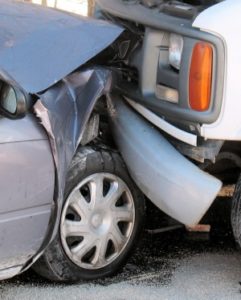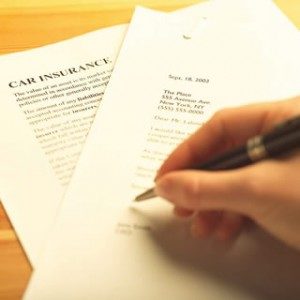What are the benefits to full auto insurance coverage?

Buying automobile insurance can be a complicated and confusing process. From how much coverage you should get and what type of coverage is required by your state of residence to what types of discounts are available, the list of questions about automobile insurance is likely to be long. However, if you have a new car or a car of high value, or drive your car extensively, full auto insurance coverage is highly recommended.
To get the best quotes for full auto insurance coverage, type your ZIP code in the FREE toolbox, and you will be pleasantly surprised at the sheer number of choices available!
According to data collected by the 2012 U.S. Census Bureau, there were 10.8 million automobile accidents in the United States in 2009. Given such a high number of accidents on U.S. roads, it is imperative that drivers understand the various terms of full auto insurance coverage before deciding whether they need it or not.
Full Auto Insurance Coverage Explained
As the name indicates, full auto insurance offers you protection against most forms of damage done to your vehicle in an accident. It is important to remember that no auto insurance policy is truly “full coverage” because there are always certain elements that are not included.
Full auto insurance coverage goes beyond most state insurance requirements which largely expect auto insurance to cover medical expenses for the injured persons and some property damage.
Full auto insurance coverage is likely to include the following:
- Collision coverage: Damages caused by an at-fault accident with another vehicle, pedestrian, or property such as fences, sidewalks, etc.
 Comprehensive coverage: All damages caused by reasons other than collision. This includes Acts of God such as damages due to natural disasters, theft, vandalism, and runaway shopping carts, among a host of others.
Comprehensive coverage: All damages caused by reasons other than collision. This includes Acts of God such as damages due to natural disasters, theft, vandalism, and runaway shopping carts, among a host of others.- Uninsured or underinsured coverage: Many people drive with low or no insurance. This form of coverage takes care of all expenses if you get hit by just such a driver.
- Towing: It pays for all towing costs in case your car breaks down.
- Rental car reimbursement: It covers you if you have to get a rental car while your accident-damaged car is getting repaired.
These different elements of full coverage are extremely beneficial and can save you from major financial headaches in case of an unfortunate accident.
Full auto insurance is also a mandatory requirement by car loan companies if you are financing your car purchase.
Indeed, not having full coverage might result in your car getting repossessed.
Benefits of Full Auto Insurance Coverage
Knowing that you are well covered in case of an automobile accident can bring peace of mind. It helps protect yourself, your family and your financial assets in the following ways:

- Full coverage protects anyone who drives your vehicle, with or without your permission.
- It covers all personal items left in your car including luggage, electronics among others.
- All windshield damage is covered. Even if the auto mechanic determines damage that needs repair or replacement, you won’t have to pay a penny.
- Most stereo equipment is covered if insurance guidelines have been followed in their installation.
- Free car rental service if your damaged car has to be in the repair shop and is unavailable to you.
- Reimbursement for all financial costs incurred because of the car accident such as lost wages due to court appearances regarding your car accident.
- Full liability coverage if your car is totaled in an accident.
- Full coverage in case of acts of nature, thefts, vandalism acts such as keying, theft etc.
Cost of Full Auto Insurance Coverage
According to the Insurance Information Institute, most states have either a minimum insurance coverage requirement or require proof of financial responsibility from the driver.
As compared to the minimum coverage required by most states, the wide umbrella of coverage offered by full auto insurance coverage makes it comparatively expensive.
Indeed, full auto insurance coverage can easily be at least 25% more and could be as high as 50% more than your basic auto insurance coverage. So it is important that you fully calculate all the numbers before making your decision about full auto insurance coverage.
 Lowering Full Auto Insurance Coverage Costs
Lowering Full Auto Insurance Coverage Costs
According to a consumer guide produced by the Washington State Office of the Insurance Commissioner, there are several ways of reducing your premium costs while getting required coverage. Some of the methods are:
Comparison shopping: Get quotes from multiple companies. Make sure you make apple-to-apple comparisons while looking at prices. In other words, make sure that the terms and conditions you are comparing are at least similar, if not the same.
Buy the ‘right’ car: Most insurance companies have higher insurance premiums for luxury cars since they cost more to repair or replace. Similarly, premiums vary based on factors such as make, model, year, and crash ratings, among others.
Bundling discounts: Ask your insurance companies about the various discounts they offer. Most companies have competitive offers such as a no-accident in ‘x’ number of years discount, good student discount, senior discounts for safe drivers, etc.
Getting higher deductibles: If you can afford to pay the higher amount in case of an accident, it makes financial sense to get the higher deductible. This will help you lower your premium. But make sure you drive carefully!
Avoid duplication of coverage: You might be covered twice for elements such as medical or uninsured driver on your insurance policy.
Try and eliminate doubling up since it adds to your cost without giving you any added benefits.
These steps will certainly help you get the best insurance quotes in the market and cover your basic and additional driving needs. Additionally, you should drive carefully and keep your record free of accidents, tickets, and traffic offenses. This will help you lower your insurance costs quite effectively.
Exceptions to Full Auto Insurance Coverage
Full coverage can be excessive and unnecessary in certain cases. Given the poor economy and the rather dismal job forecasts, people are diligently trying to avoid unneeded expenditures. So if you fall into the following categories, you might want to skip getting full coverage.
- If your car is old and worth little, you are likely paying more by having full coverage than your car is worth.
- If your car is not being driven and stored away in a garage, it certainly does not need full coverage.
- If you drive very few miles per week and are a careful driver, you might not require full coverage.
Full auto insurance coverage is a good idea for a car that still carries some value, especially if you can afford the costs.
This is more so if you are a new driver, own an expensive car, still owe money on a loan, or are just seeking peace of mind!
 Steps to Getting Auto Insurance Coverage
Steps to Getting Auto Insurance Coverage
Once you have made a decision about what kind of auto insurance you require and how much coverage you want, you should take the following steps to get the policy that meets all your needs at the lowest price possible.
- Review your present insurance policy: Make sure you know all the nuts and bolts of your policy, as well as how much it costs you per year and per month to insure your vehicle.
- Check your driving record: If you have tickets or points that are about to scrubbed from your record, wait for it to happen. Your driving record has a substantive impact on your insurance price.
- Get competitive quotes: Keep all details such as your policy, your driver’s license, and your vehicle registration at hand, since this information will be needed as you solicit insurance companies.
Whether you go online, talk on the phone, or visit an insurance office, make sure that you get all the quote information emailed to you.
- Narrow down the list: Based on your requirements and the costs, narrow down your list to the best offers. This is a critical part of the process, so take your time and make sure you understand all the terms and conditions.
- Assess the insurance company: While you might have received an amazing quote from an insurance company, it is necessary to make sure that these low quotes are being presented by a licensed company that is backed by strong financials and is known for fair treatment of its customers. Such information is available at the National Association of Insurance Commissioners’ Consumer Information Source and J.D. Power and Associates.
- Ask for discounts: Once you have finalized your list of insurance companies, ask them for competitive discounts that will help lower your insurance bill.
- Review your policy: Before signing the dotted line, make sure that you understand the various terms and conditions. Once you have signed your policy, get your proof of insurance as soon as possible.

Whether you are getting your quotes from an online insurance consolidator or over the phone from an insurance agent, these steps will most likely help you get the best auto insurance coverage at the most competitive price possible.
Type your ZIP code into the FREE toolbox, and you are likely to get a plethora of affordable quotes for full auto insurance coverage now
